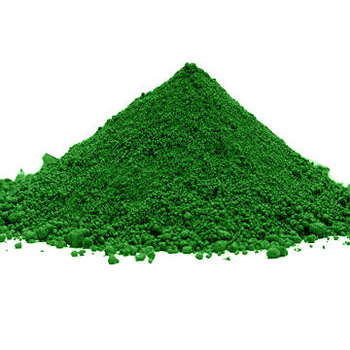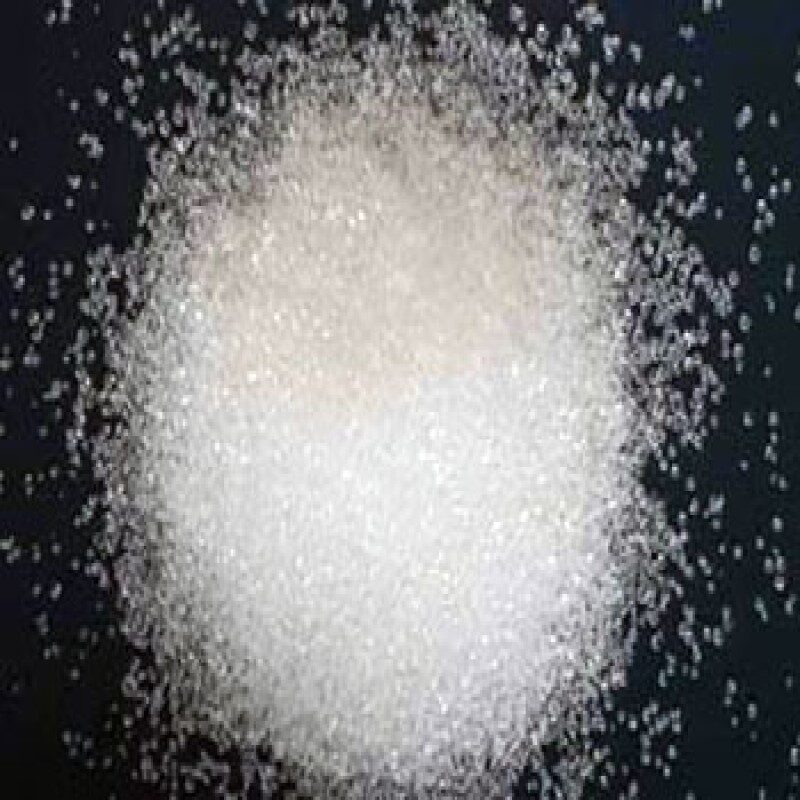Description
Remarks: The sample complies as per above Specification.
Uses: Chromium has long been of interest for its possible connection to various health conditions. Among the most active areas of chromium research are its use in supplement form to treat diabetes, lower blood lipid levels, promote weight loss, and improve body composition.
Packing: 25 kg HDPE BAGS/HDPE Drum
For AMIZARA SPECILITY CHEMICALS LLP
MSDS
Chromic Chloride MSDS Sheet, Material Safety Data Sheet
Section 1: Product and Company Identification
| Product Name & Other Names |
Chromic chloride hexahydrate or Chromium chloride hexahydrate |
| CAS No. |
10060-12-5 |
| EINECS, EC Number |
233-038-3 |
| Molecular Weight |
266.45 |
| Chemical Formula |
CrCl3-6H2O |
| Relevant uses and uses advised against (if any) |
Industrial use only. |
| Supplier |
As per letterhead. |
SECTION 2 : Hazards Identification
GHS, Globally Harmonized System Classification in accordance with 29 CFR 1910 Classification according to Regulation (EC) No 1272/2008
| Corrosive to metals Category |
4, H302 |
| Acute toxicity, Oral Category |
2, H315 |
| Skin corrosion/irritation Category |
2, H315 |
| Serious eye damage/eye irritation Category |
2A, H319 |
| Specific target organ toxicity, single exposure; Respiratory tract irritation Category |
3, H332 |
| Acute toxicity, Inhalation Category |
4, H335 |
| Hazardous to the aquatic environment, acute hazard Category |
3 |
Labeling according to GHS & Regulation (EC) No 1272/2008
Hazard Statements:
| H290 |
May be corrosive to metals. |
| H302 |
Harmful if swallowed. |
| H315 |
Causes skin irritation. |
| H319 |
Causes serious eye irritation. |
| H332 |
Harmful if inhaled.. |
| H335 |
May cause respiratory irritation. |
| H402 |
Harmful to aquatic life. |
Precautionary statements:
| P260 |
Do not breathe dust/fume/gas/mist/vapors/spray. |
| P261 |
Remove/Take off immediately all contaminated clothing. |
| P264 |
Wash thoroughly after handling. |
| P270 |
Do not eat, drink or smoke when using this product. |
| P271 |
Use only outdoors or in a well-ventilated area. |
| P273 |
Avoid release to the environment. |
| P280 |
Wear protective gloves/protective clothing/eye protection/face protection. |
| P310 |
Immediately call a POISON CENTER or doctor/physician. |
| P312 |
Call a POISON CENTER or doctor/physician if you feel unwell. |
| P314 |
Get medical advice/attention if you feel unwell. |
| P362 |
Take off contaminated clothing and wash before reuse. |
| P330 |
Rinse mouth |
| P301+P312 |
IF SWALLOWED :
Call a POISON CENTER or doctor/ physician if you feel unwell. |
| P302+P352 |
IF ON SKIN :Wash with plenty of soap and water. |
| P304+P340 |
IF INHALED :Remove victim to fresh air and keep at rest in a position comfortable for breathing. |
| P305+P351+P338 |
IF IN EYES:Rinse cautiously with water for several minutes.
Remove contact lenses, if present and easy to do. Continue rinsing. |
| P332+P313 |
If skin irritation occurs :Get medical advice/attention. |
| P501 |
Dispose of contents/container in accordance with
local/regional/national/international regulation. |
Classification according to EU Directives 67/548/EEC or 1999/45/EC :
| Hazard Symbol |
Xn Harmful
C Corrosive |
| Risk Phrases: |
R20/22 Harmful by inhalation and if swallowed
R36/37/38 Irritating to eyes, respiratory system and skin
R52 Harmful to aquatic organisms |
Section 3: Composition / Information on Ingredients
| Product Name & Other Names: |
Chromic chloride hexahydrate or Chromium chloride hexahydrate |
| CAS No.: |
10060-12-5 |
| EINECS, EC Number: |
233-038-3 |
SECTION 4: First Aid Measures
Always seek medical attention after first aid measures are provided.
| Eyes |
Immediately flush eyes with excess water for 15 minutes, lifting lower and upper eyelids occasionally. |
| Skin |
Immediately flush skin with excess water for 15 minutes while removing contaminated clothing. |
| Ingestion |
Call Emergency Medical immediately.
Rinse mouth with cold water.
Give victim 1-2 cups of water or milk to drink.
Induce vomiting immediately. |
| Inhalation |
Remove to fresh air.
If not breathing, give artificial respiration. |
SECTION 5 : Fire Fighting Measures
It is non-flammable solid. When heated to decomposition, emits acrid fumes.
| Suitable extinguishing media |
Use water spray, alcohol-resistant foam, dry chemical, or carbon dioxide. |
| Special hazards arising from the substance or mixture |
Hydrogen chloride gas, Chromium oxides Protective equipment |
| Precautions for firefighters |
Use foam or dry chemical to extinguish fire. Firefighters should wear full fire fighting turn-out gear and respiratory protection. Cool container with water spray. Material is not sensitive to impact or static discharge. |
SECTION 6: Accidental Release Measures
| Personal precautions, protective equipment, and emergency procedures |
Ventilate area of leak or spill. Avoid breathing dust/fumes/gas/mist/vapors/spray. Use individual protective equipment (waterproof boots, suitable protective clothing, safety glasses, etc.). Restrict unprotected personnel from the area. Prevent any contact with hot surfaces. Do not approach facing the wind. Do not touch the spilled material. |
| Environmental precautions |
Do not let the product enter drains, soil, or water sources |
| Methods and materials used for containment Cleanup procedures and Storage |
Contain spilled material. Cover with an inert, non-combustible absorbent material, (e.g. sand, earth, diatomaceous earth, vermiculite). Vacuum or sweep-up and remove to an approved disposal container. Finish cleaning by spreading water on the contaminated surface and allow to evacuate as per law. |
SECTION 7:Handling and Storage Green
| Precautions for safe handling |
Apply according to good manufacturing and industrial hygiene practices. Ensure proper ventilation. In case of insufficient ventilation, wear suitable respiratory equipment. Wash thoroughly after handling. Do not drink, eat, or smoke while handling. Avoid contact with skin, eyes, and clothing. Minimize dust
generation. Avoid breathing dust/fumes/gas/mist/vapors/spray. Avoid contact with eyes, skin, and clothing. Keep container tightly closed. Avoid ingestion and inhalation. Use individual protective equipment (waterproof boots, suitable protective clothing, safety glasses, etc.). Prevent any contact with hot surfaces. |
| Conditions for safe storage, including any incompatibilities |
Store in cool, dry, and ventilated area away from heat sources and protected from sunlight in tightly closed original container. Keep air contact to a minimum. Store protected from heat, sparks and ignition sources and incompatible materials. Avoid contact with skin and eyes. Avoid inhalation of dust/mist/vapor. Do not store with incompatible materials like strong oxidizing agents and lithium. |
SECTION 8: Exposure Controls/Personal Protection
- Use ventilation to keep airborne concentrations below exposure limits.
- Have approved eyewash facility, safety shower, and fire extinguishers readily available.
- Wash hands thoroughly after handling material and before eating or drinking.
| Exposure guidelines |
OSHA PEL: 0.5 mg/m3, ACGIH: TLV: 0.5 mg/m3, STEL: Not Available. |
| Eye/face Protection |
Wear appropriate protective eyeglasses or chemical safety goggles as described by OSHA. |
| Skin and body protection |
Wear appropriate protective gloves and clothing to prevent skin exposure. |
| Respiratory Protection |
Follow the OSHA respirator regulations. |
| Hygiene Measures |
Handle in accordance with good industrial hygiene and safety practice. |
SECTION 9: Physical and Chemical Properties
| Appearance |
Solid. Green crystals or powder. |
| Odor |
Odorless. |
| Odor threshold |
Not available. |
| pH |
Not available. |
| Relative density |
around 2.87 |
| Melting Point |
>1150C (2102F). |
| Initial boiling point and boiling range |
Not available. |
| Flash point |
Not available. |
| Auto-ignition temperature |
Not available. |
| Decomposition temperature |
1300C (2372F). |
| Upper/lower flammability or explosive limits |
Not available. |
| Vapor pressure |
Not available |
| Vapor density |
Not available. |
| Evaporation rate |
Not available. |
| Flammability (solid, gas) |
Not available. |
| Partition coefficient: n-octanol/water |
Not available. |
| Solubility(ies) |
Very slightly soluble in hot water. |
| Viscosity |
Not available. |
| Molecular formula |
CrCl3 · 6H2O |
| Molecular weight |
266.45 g/mole. |
SECTION 10. Stability and Reactivity
Avoid heat and ignition sources.
| Stability |
Stable under normal conditions of use and storage. |
| Incompatibility |
Lithium and nitrogen. |
| Shelf life |
Indefinite if stored properly. |
SECTION 11. Toxicological Information
| Chromium Chloride |
LD50 [oral, rat]; 1790 mg/kg; LC50 [rat]; N/A; LD50 Dermal [rabbit]; N/A |
| Carcinogenicity |
3 – Group 3: Not classifiable as to its carcinogenicity to humans by IARC. |
| Mutagenic Effects |
Not available. |
| Teratogenic Effects |
Not available. |
| Developmental Toxicity |
Not available. |
| Reproductive Effects |
No information available.. |
SECTION 12. Ecological Information
| Ecotoxicity (aquatic and terrestrial) |
Contains a heavy metal – toxic to terrestrial and aquatic plants and animals. Do not release to environment. |
| Results of PBT and vPvB assessment |
This substance/mixture contains no components considered to be either persistent, bioaccumulative and toxic (PBT), or very persistent and very bioaccumulative (vPvB) at levels of 0.1% or higher. |
SECTION 13. Disposal Considerations
Check with all applicable local, regional, and national laws and regulations.
SECTION 14. Transport Information
| DOT USA & ADR/RID |
UN-No UN3260
Proper Shipping Name Corrosive solid, acidic, inorganic, n.o.s. Chromic chloride.
Hazard Class 8 Packing Group III. |
| Canada TDG |
UN-No UN3260
Proper Shipping Name Corrosive solid, acidic, inorganic, n.o.s. Chromic chloride.
Hazard Class 8 Packing Group III. |
| IMDG & IATA |
UN-No UN3260
Proper Shipping Name Corrosive solid, acidic, inorganic, n.o.s. Chromic chloride.
Hazard Class 8 Packing Group III. |
SECTION 15. Regulatory Information
USA :
| California Proposition 65 |
Not listed. |
SECTION 16. Other Information
European Labeling in Accordance with EC Directives:
| H290 |
May be corrosive to metals. |
| H302 |
Harmful if swallowed. |
| H315 |
Causes skin irritation. |
| H319 |
Causes serious eye irritation. |
| H332 |
Harmful if inhaled. |
| H335 |
May cause respiratory irritation |
| H402 |
Harmful to aquatic life. |
| Hazard Symbol |
Xn Harmful
C Corrosive |
| Risk Phrase |
R20/22 Harmful by inhalation and if swallowed
R36/37/38 Irritating to eyes, respiratory system and skin
R52 Harmful to aquatic organisms |
Disclaimer:
Our company provides this SDS sheet contained herein in good faith but makes no representation as to its comprehensiveness or accuracy. This MSDS sheet is intended only as a guide to the appropriate precautionary handling of the material by a properly trained person using this product. Individuals receiving the MSDS information must exercise their independent judgment in determining its appropriateness for a particular purpose.




